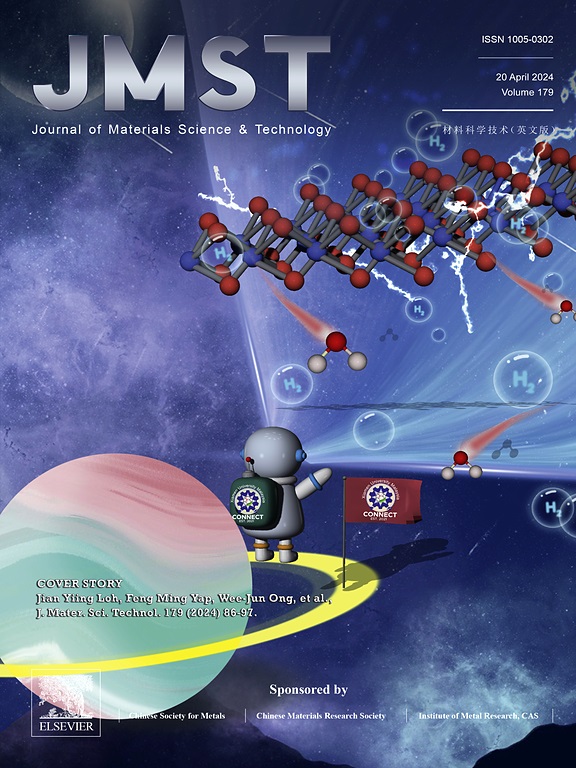Tailoring the ultra-fine size and thermal stability of Au(Cu) nanoparticles by application of interface thermodynamics
IF 11.2
1区 材料科学
Q1 MATERIALS SCIENCE, MULTIDISCIPLINARY
引用次数: 0
Abstract
Ultra-fine sizes and high thermal stability are often mutually exclusive for nanocrystalline (NC) materials because the high grain boundary (GB) energy of nanograins provides a large driving force for grain coarsening. Alloying is a classical strategy for stabilizing the microstructure of NC materials. However, the stabilization effects of alloying on NC materials typically rely on the segregation of solute atoms at GBs, which imposes restrictions on the selection of possible alloy systems. In this study, it is revealed experimentally and corroborated theoretically that the interface energies can be continuously regulated by simply manipulating the alloy composition in simple solid-solution alloy systems, enabling the control of the ultra-fine sizes and thermal stability of the alloys without GB segregation. In a model system of NC Au(Cu)-SiO2 films, the dissolved Cu in Au can be used as a very accurate tool to tailor the interface energies of NC Au(Cu)-SiO2 film, leading to ultra-fine (below 2 nm) Au(Cu) nanoparticles with exceptional thermal stability. Such Cu-induced grain refinement and thermal stabilization effects are supported by interface thermodynamic calculations. This study thus provides an alloying stabilization strategy without GB segregation, which broadens the scope for developing thermally stable NC alloy systems.

应用界面热力学裁剪金(铜)纳米颗粒的超细尺寸和热稳定性
纳米晶(NC)材料的超细尺寸和高热稳定性往往是相互排斥的,因为纳米颗粒的高晶界能为晶粒粗化提供了很大的动力。合金化是稳定数控材料微观组织的一种经典策略。然而,合金对数控材料的稳定作用通常依赖于溶质原子在gb处的偏析,这对可能的合金体系的选择施加了限制。本研究通过实验和理论证实,在简单的固溶合金体系中,通过简单地控制合金成分就可以连续调节界面能,从而实现对合金超细尺寸和热稳定性的控制,而不产生GB偏析。在NC Au(Cu)-SiO2薄膜模型系统中,溶解在Au中的Cu可以作为一个非常精确的工具来定制NC Au(Cu)-SiO2薄膜的界面能,从而获得具有优异热稳定性的超细(低于2 nm) Au(Cu)纳米颗粒。界面热力学计算支持cu诱导的晶粒细化和热稳定效应。因此,本研究提供了一种无GB偏析的合金稳定策略,为开发热稳定的数控合金系统拓宽了范围。
本文章由计算机程序翻译,如有差异,请以英文原文为准。
求助全文
约1分钟内获得全文
求助全文
来源期刊

Journal of Materials Science & Technology
工程技术-材料科学:综合
CiteScore
20.00
自引率
11.00%
发文量
995
审稿时长
13 days
期刊介绍:
Journal of Materials Science & Technology strives to promote global collaboration in the field of materials science and technology. It primarily publishes original research papers, invited review articles, letters, research notes, and summaries of scientific achievements. The journal covers a wide range of materials science and technology topics, including metallic materials, inorganic nonmetallic materials, and composite materials.
 求助内容:
求助内容: 应助结果提醒方式:
应助结果提醒方式:


